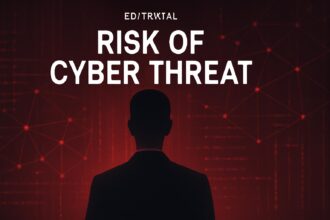Biden Administration Implements Electricity Reporting Requirements for Cryptocurrency Miners
The Biden administration has taken action to address concerns over the energy consumption and environmental impact of large cryptocurrency mining operations. In a recent press release, The Energy Information Administration (EIA) announced that it will now require these operations to report their electricity usage. The move comes as experts warn that the industry could strain the nation’s electricity grids and contribute to climate change.
The Scope of the Issue: Cryptocurrency Mining and Energy Consumption
According to the EIA, there are currently 137 identified commercial cryptocurrency miners operating in the United States, accounting for approximately 2.3 percent of national energy usage. This translates to a staggering 90 terawatt-hours per year, surpassing the energy consumption of entire countries such as Finland, Belgium, and Chile. Additionally, it has been revealed that almost 38 percent of all bitcoin is mined in the US, a significant increase from 2020 when it accounted for only 3.4 percent.
Tracking and Collecting Data: EIA Survey Aims to Refine Policy
In response to these concerns, the EIA has launched a data collection initiative this week. The survey aims to better understand the growing demands of the cryptocurrency mining industry and identify the regions within the US where it is most prevalent. This data will inform future policy decisions to ensure a more refined and effective approach. The EIA report stressed the need to address the energy-intensive nature of cryptocurrency mining and its potential impact on the electricity grid, carbon dioxide emissions, and energy prices for consumers.
Harmful Environmental Impact: Carbon Dioxide Emissions and Fossil Fuels
The clean energy advocacy group RMI estimates that US cryptocurrency mines release a staggering 25 to 50 million tons of carbon dioxide into the atmosphere annually. This is equivalent to the yearly diesel emissions generated by the US railroad industry. The majority of electricity production worldwide relies on burning fossil fuels, a process that significantly contributes to carbon dioxide emissions. The environmental impact of these mining operations cannot be overlooked, and action must be taken to mitigate their negative effects.
Geographic Distribution and Energy Grid Strain
Cryptocurrency mining operations in the US are concentrated in various states, with Texas, Georgia, and New York being the primary hotspots. However, the clustering of these operations poses a significant risk to the already fragile energy grid in Texas. Energy research consultancy firm Wood Mackenzie has highlighted that crypto mining operations not only burden the state’s energy grid but also increase energy prices for consumers. The reliance on real-time demand for energy costs in Texas has resulted in a 4.7 percent monthly increase in utility bills due to cryptocurrency mining. Additionally, these operations tend to locate near renewable energy facilities, diverting clean power from nearby homes and businesses.
By implementing electricity reporting requirements for large cryptocurrency mining operations, the Biden administration aims to address rising concerns over energy consumption, strain on the electricity grid, and carbon dioxide emissions. As the industry continues to grow, understanding its impact and implementing appropriate policies becomes crucial in ensuring a sustainable future for cryptocurrency mining in the United States.
Analyst comment
Positive news: The Biden administration implementing electricity reporting requirements for cryptocurrency miners is seen as a positive move to address concerns over energy consumption, strain on the electricity grid, and carbon dioxide emissions. It shows a commitment to a sustainable future for cryptocurrency mining in the United States.
As an analyst, I predict that this move will lead to better regulation and oversight of cryptocurrency mining operations. It will help identify areas where the industry is most prevalent and inform future policy decisions. This will ultimately result in a more refined and effective approach to managing the energy-intensive nature of mining, reducing its negative environmental impact and protecting the electricity grid.













